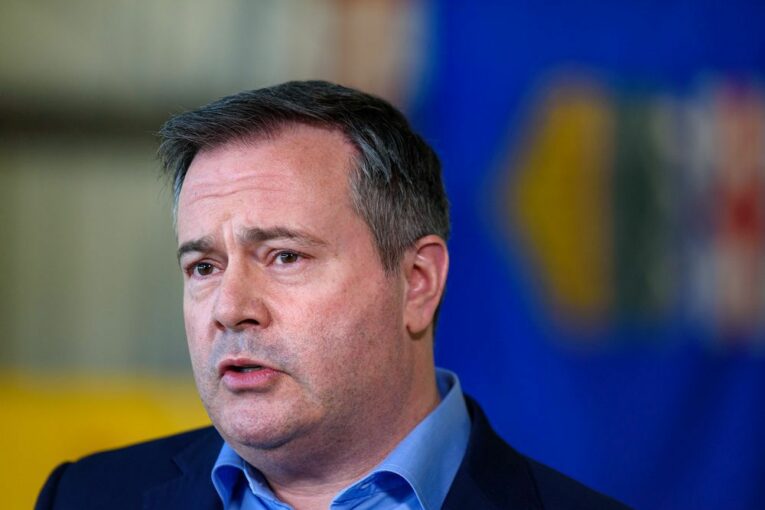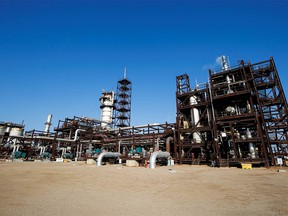
Here’s an interesting game to play.
Which politician — Jason Kenney or Steven Guilbeault — made the following comments Thursday about oilsands operators seeking more government help to move ahead with carbon capture, utilization and storage projects?
“These companies are making record profits, they should be investing some of them into ensuring that they have a future.”
And this remark?
“We’ve been very clear and these are companies that are hugely profitable. If they believe that these kinds of investments are critical for their long-term future, I’m sure they can find a way to make it work.”
For the record, the first comment came from Guilbeault, the federal environment and climate change minister, to a Canadian Press reporter.
The latter remark came from Kenney in an interview.
Alberta’s premier was asked if he were willing to open the door to providing provincial incentives to oilsands-related CCUS projects, beyond what Ottawa is already offering.
As you can see, there’s not much daylight on this issue between the two men who come from different parties — and vastly different sides of the political landscape.
“It sounds like a bit of a consensus,” said Chris Severson-Baker of the Pembina Institute, which supports the new federal investment tax credit for such projects, but opposes additional financial incentives from either level of government.
“Hold firm.”
The issue of provincial assistance for companies to build CCUS projects in Alberta has intensified since the Trudeau government announced the tax credit in last month’s budget.
Canada has set an ambitious goal of curbing emissions by more than 40 per cent by 2030 — and reaching net zero by 2050. Large industrial emitters are contemplating multibillion-dollar investments in such developments.
Companies across the country, such as chemical producers or oilsands operators, would capture carbon dioxide emissions and bury them underground or use them in industrial processes.
The capital costs are immense.
The economics aren’t simple — federal carbon pricing could shift with a change in government, or carbon credits received for voluntarily lowering emissions might not have a high enough value in the future to offset operating costs and provide a return on investment.
“In our view, achieving net zero via technology is uniquely feasible for the (oilsands) sector, but it will not be a walk in the park and is no doubt a costly endeavour that poses substantial risk to investors,” BMO Capital Markets said in a report in March.
The new federal credit is set at 50 per cent for investments made in equipment needed to capture C02 in such projects, and a 37.5 per cent credit for spending on equipment used for transportation and storage.
However, it doesn’t meet the 75 per cent target the industry was seeking.
“I think we’ll need some other policy, either a policy that gives some certainty to the carbon price long term or one that further reduces the capital cost,” said Jackie Forrest, executive director of ARC Energy Research Institute.
For the country’s oilsands producers, CCUS is seen as pivotal to lowering emissions and meeting the 2030 federal targets, as well as achieving their goals of attaining net-zero emissions by 2050.

A group of six large oilsands producers — including Canadian Natural Resources, Cenovus Energy and MEG Energy— has formed the Oilsands Pathways to Net Zero Alliance and are working together to reach the target.
They are examining the construction of a CO2 trunk line that would potentially connect 23 oilsands facilities to a storage hub near Cold Lake. The group is applying for underground pore space in the Cold Lake area through a provincial process.
They’re also seeking financial assistance from Alberta.
Canadian Natural Resources president Tim McKay told a first-quarter earnings call Thursday that the group needs to work with Alberta on securing pore space and to understand “how the province can help the pathway’s project proceed forward.”
MEG Energy CEO Derek Evans has said the first phase of the group’s foundational project would cost about $14.5 billion and capture 10 megatonnes annually by 2030, while creating thousands of construction and permanent jobs in Alberta.
“We are very interested and waiting with bated breath when the province is going to step up,” Evans said on a conference call with analysts this week.
Cenovus CEO Alex Pourbaix recently called the federal credit a good start, noting other countries have supported carbon capture projects with a 60 to 70 per cent investment tax credit and cover some operating expenses.
“As an industry, we are going to require some more help,” he said.
However, with the oilpatch reporting record first-quarter profits, it won’t get extra money from Ottawa, Guilbeault indicated.
Kenney said Alberta is already going to make a “multibillion-dollar contribution” to carbon capture developments because oilsands companies can discount capital expenditures made on CCUS projects from royalty payments paid to the province.
“That’s a very huge contribution. In addition, we reduced their tax rate by one-third,” he said of Alberta lowering the corporate income tax rate to eight per cent almost two years ago.
“I don’t think it makes any sense to play a shell game here and raise their tax rate back to 12 (per cent) and just pass that on through some kind of a CCUS credit.”
There’s a lot riding on this issue for all sides, including jobs, investment, royalties, the ability to grow production of low-carbon oil and the imperative of cutting emissions.
With oil prices nearing US$110 a barrel and discussions ongoing between the sides, expect similar comments from the oilsands leaders, more pushback from Alberta’s premier and the federal environment minister — and more pressure for governments to stand their ground.
Chris Varcoe is a Calgary Herald columnist.
You can read more of the news on source

